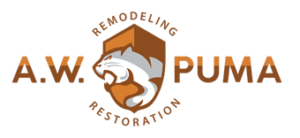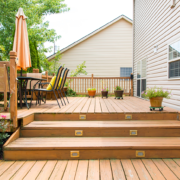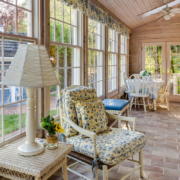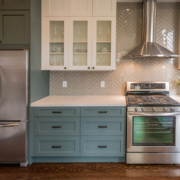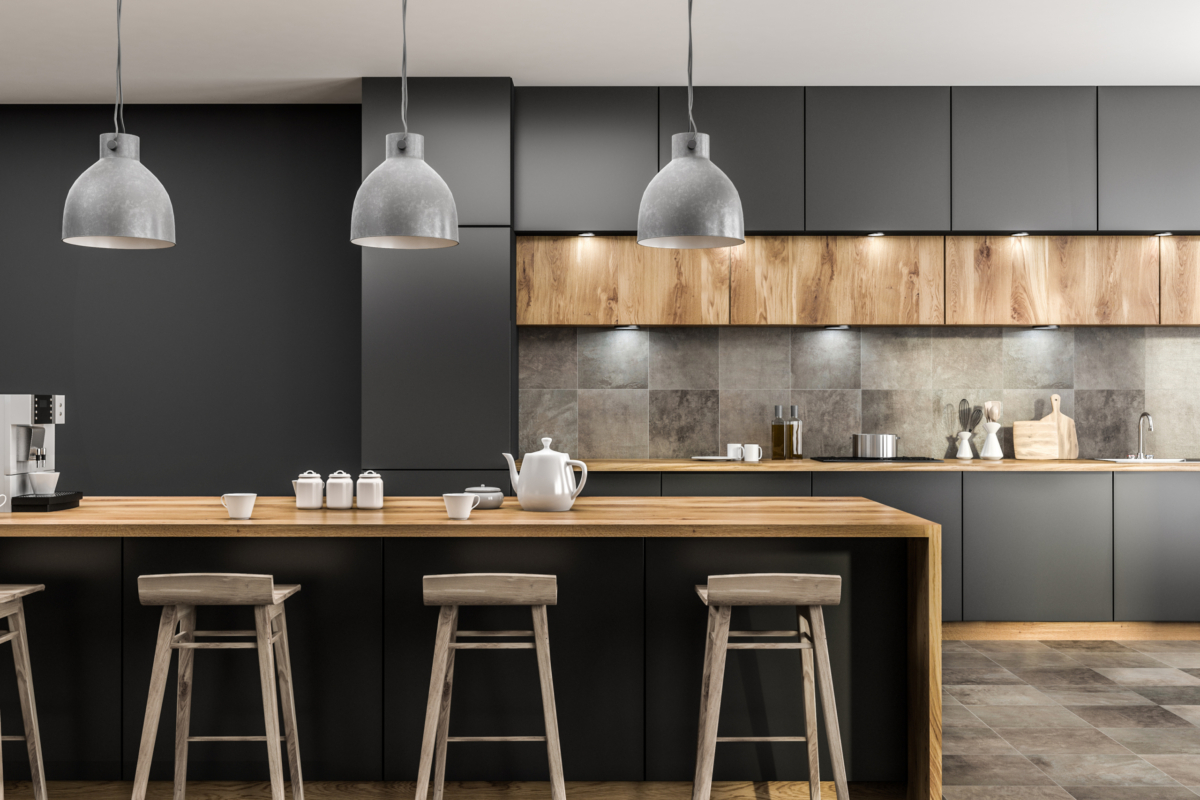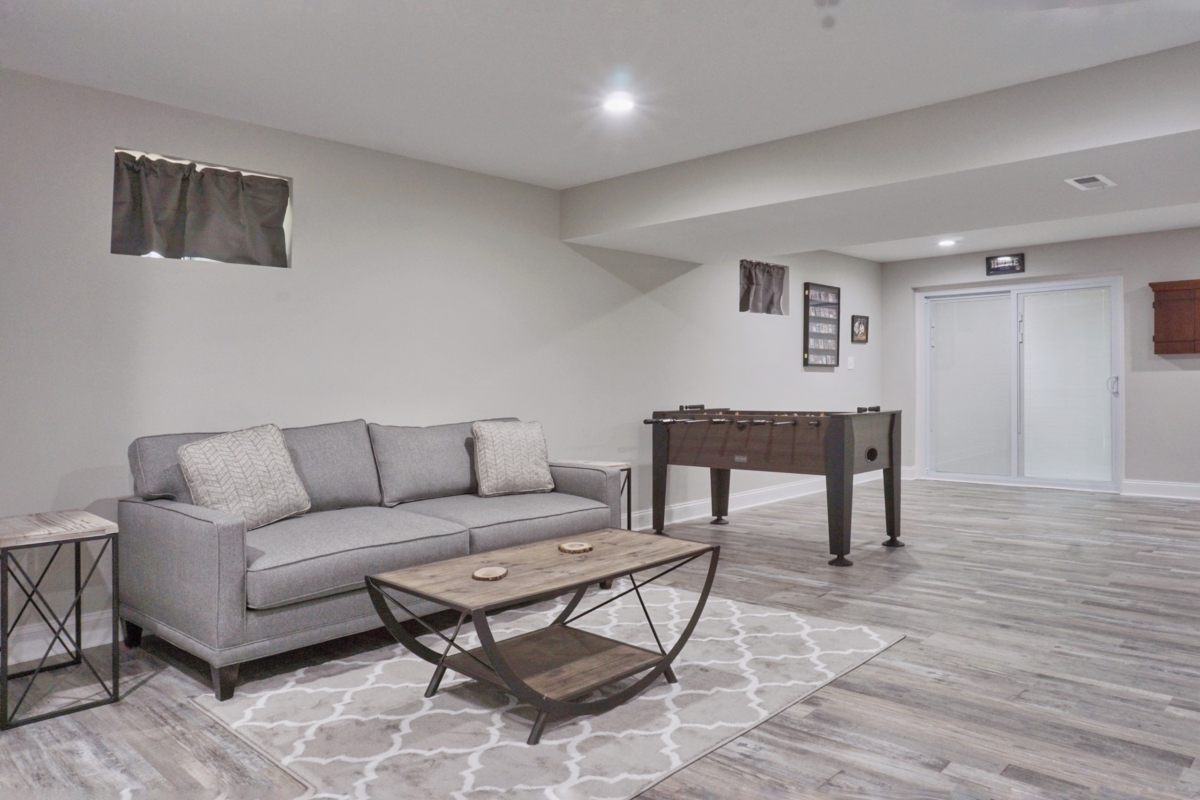When thinking (or dreaming) about remodeling your kitchen, you have probably been spurred on by magazine spreads of today’s kitchen trends. More likely, however, you have been frustrated by the fact that your current kitchen doesn’t reflect your lifestyle or cooking needs, or even by the lack of storage. If you love to entertain or have lots of small appliances or cooking gadgets that need a home or if you need new appliances, a kitchen remodel may be in your future.
What to do first to prepare for your kitchen remodel
Consider the square footage of your kitchen space. Size dictates layout and is especially important in a small kitchen. What you want – an island or prep sink or extra storage space – may not be doable without constructing an addition to the kitchen or knocking down walls. Your contractor will help you design a layout that makes the best of the available space and will give you options for windows and doors, which may be moved to accommodate your wishes.
Consider the layout of the kitchen
The workflow of the layout should match your cooking routine and lifestyle. You want to be able to move easily from the stove to the sink. Are you the primary cook or do you share cooking with someone else at the same time? Are you a gourmet cook who wants to allow space for professional appliances? Will you be hosting elaborate dinners or feeding young children every night? Do you prefer to cook and socialize with guests seated at a kitchen counter? Do you want to include an eat-in area or utilize the space for other purposes? Do you prefer natural light or designer lighting fixtures?
Age matters
You might be faced with electrical or plumbing issues during a remodel if your home is old. You’ll want to be sure your remodeling team includes an architect and engineer to ensure that the electrical system and current plumbing can deal with high tech appliances and lighting.
An older home may have sagging floors or walls that are not exactly “plumb” and may need to be straightened. These possibilities can add a lot to the remodeling budget.
Selecting countertops for your kitchen remodel
There is more to consider when selecting kitchen countertops than just what looks nice. You will want to think about how you will use the counters in your new kitchen. If you will be doing a lot of cooking and using the countertops as prep and cleanup areas, you will need to be concerned about scratches and food stains.
Some countertop materials such as marble, limestone, and granite are porous and will need to be sealed at least once a year. Wood countertops require oiling at least twice a year. Soapstone doesn’t require daily maintenance, but it will show wear and tear and develop a patina over time. Mineral oil applied regularly is recommended to keep it looking good.
Granite countertops can be maintained rather easily with a daily wiping of spills and crumbs with hot water and a sponge. A granite counter cleaner spray can be used to clean and disinfect the countertop. Some manufacturers recommend a monthly polish and yearly sealing if the granite is showing signs of absorbing water around the faucet or in high traffic areas.
You may be drawn aesthetically to one material over another and budget considerations will come into play. A basic laminate countertop costs about $22 per square foot and top-grade marble or granite can cost as much as $250 per square foot. A high-end butcher’s block can be very expensive as well. Your contractor will be able to assist you in the selection of a countertop that you love that will fit into your budget.
Kitchen cabinets – to refinish or buy new?
Many times cabinets can be refinished with paint or stain or doors removed and replaced, keeping the infrastructure intact. Do you want cabinets with solid doors or glass or perhaps you prefer open shelves or a mixture of different styles? As is the case with all the other decisions to be made, budget limitations will play a major role and your contractor can help you with selecting the right way to go to achieve your ultimate goals.
Kitchen Flooring … so many choices!
From vinyl flooring to wood planking to cork and natural stone, your choices for a renovated kitchen are many. You’ll want to find a durable option that is easy-to-clean and just right for your lifestyle. So much goes on in the kitchen, it is vital that the new floor will be able to withstand family traffic as well as accidents and spills that occur from cooking, babies, and pets. Some of the most popular flooring options include:
Vinyl
Budget friendly, sheet vinyl is resistant to water and stains, is scrubbable, and comfortable on your feet and back. Heavy appliances can leave depressions if not prevented with the use of “coasters” under legs. Sheet vinyl has no seams to allow water to seep between the tiles. It doesn’t get cold in the winter and is available in a variety of colors and patterns.
Porcelain Tile
An extremely durable tile, porcelain is waterproof and stain resistant, but the grout between tiles requires periodic sealing to prevent stains. Stronger than ceramic tile, it comes in many sizes, shapes, and patterns. Porcelain is heavy and can be slippery when wet. Glasses and plates that fall on a porcelain floor will likely break. Installation requires an underlayer and special thinset mortar.
Engineered Vinyl Planks
Engineered vinyl planks closely resemble real hardwood flooring and are waterproof and are slightly cushioned to give the floor a soft feel underfoot and they are easy to clean with just soap and water. Engineered vinyl planks can be installed directly over existing tile, concrete, or linoleum. Care must be taken when moving large appliances, as this type of flooring is not as resilient as porcelain.
Cork
Cork provides a warm and cushioned feel underfoot and is budget-friendly, but it can be scratched by heavy objects. Composed of ground cork and resins which are compressed into tiles, cork flooring is available in basic colors. Cork can absorb sound so it may be the choice where there is a living area below the kitchen. It resists stains but is not stain-proof and can fade if exposed to direct sunlight.
Natural Stone Tile
No two tiles are identical, so stone tiles add a one-of-a-kind look to the floor. Stone has a non-slip surface but can stain without regular sealing. An underlayment and thinset mortar are required for installation. There are several types of stone tiles, including travertine, marble, slate, and granite. Your contractor can discuss with you the attributes and pricing of each.
Appliances for your kitchen
The best advice is to get the best appliances you can afford. Quality appliances will cost more, but they will include the features you want and will last longer. If you are thinking about appliances that are “built-in,” like steam ovens, wine refrigerators, a coffee station, or wet bar, you’ll need to plan for these from the start.
The secret is in the details
Just as important, but not as exciting as countertops and flooring, are the details that you need to plan. Make certain that you consider proper ventilation – how and where vents will need to be moved or installed. You want to address the number of electrical outlets you will need and where best to position them. Do you want a garbage disposal or a compactor? Do you have a pet who needs a special place for food storage and eating?
Timeline for your kitchen remodel
While you may have been dreaming about and planning for your kitchen remodel for a long time, you must realize that it won’t happen overnight. Your contractor will give you a timeline on what will happen when. A.W. Puma Construction appreciates their relationships with their clients and keeps them informed every step of the way. (See our process.)
Budgeting for your kitchen remodel
Yes, it is expensive. According to Remodeling Magazine, a minor mid-range kitchen remodel in 2020 cost $23,452 and the national average cost for a full, midrange kitchen remodel is about $66,000. An upscale renovation can be as much as twice that. Homeadvisor (homeadvisor.com) reports that the biggest portion of the cost is for cabinetry and hardware (29 percent), installation (17 percent), and appliances and ventilation 14 percent).
A good rule of thumb is to invest approximately 10 percent of the home’s overall value on a full-scale kitchen remodel. Once again, your designer/contractor will assist you in determining what you should expect in cost and help you find cost-effective alternatives to stay within your budget.
There are many details to think about when planning a kitchen remodel. When you are ready to get started on your plan, contact Albert Puma at A.W. Puma by calling 508-918-0422 or use the form on our Contact page.
